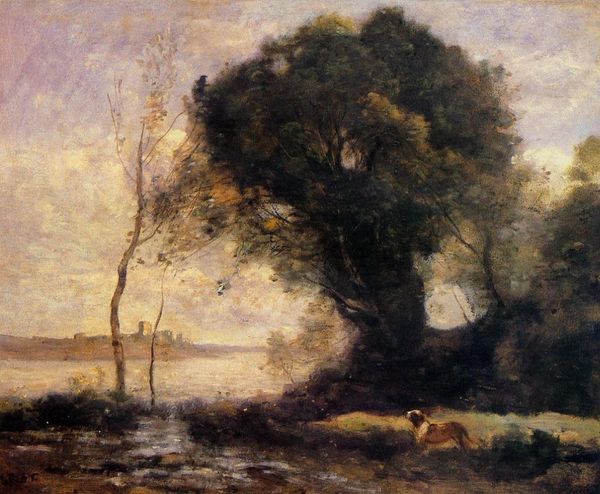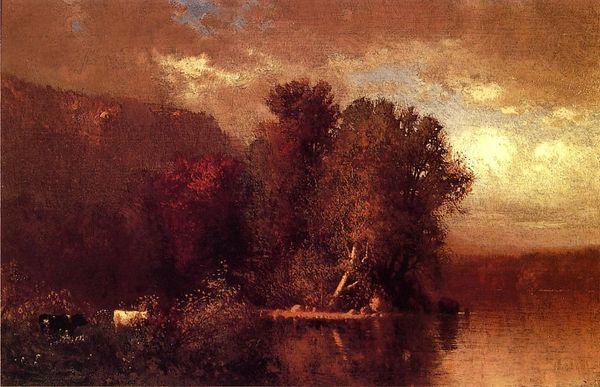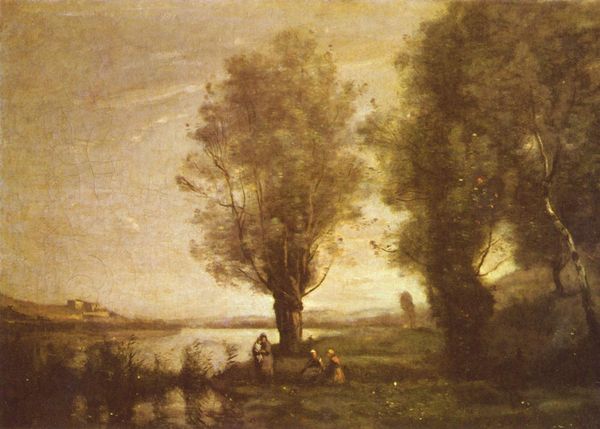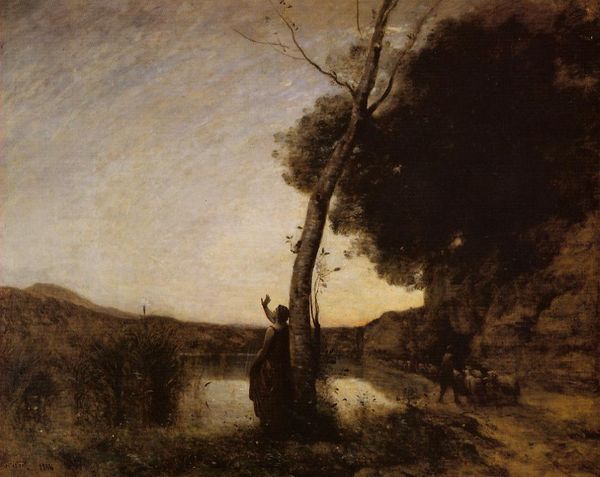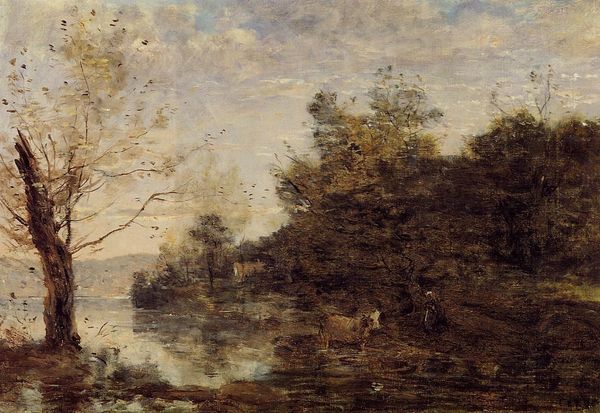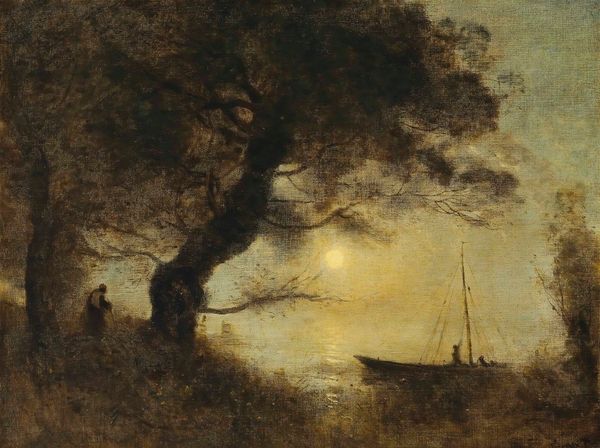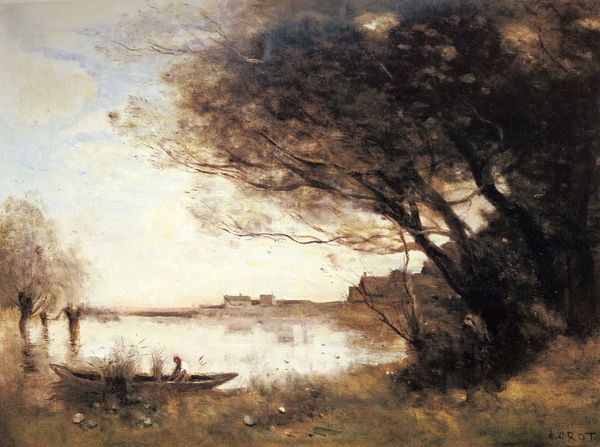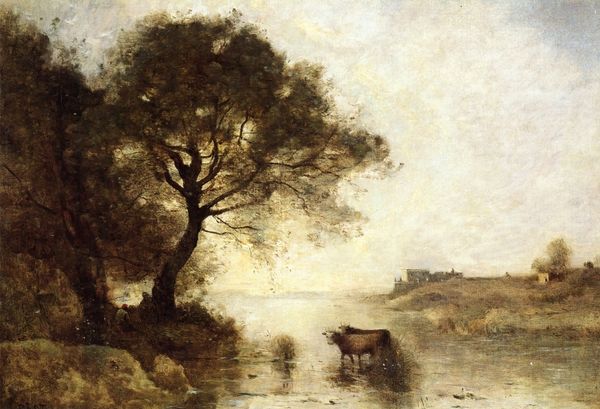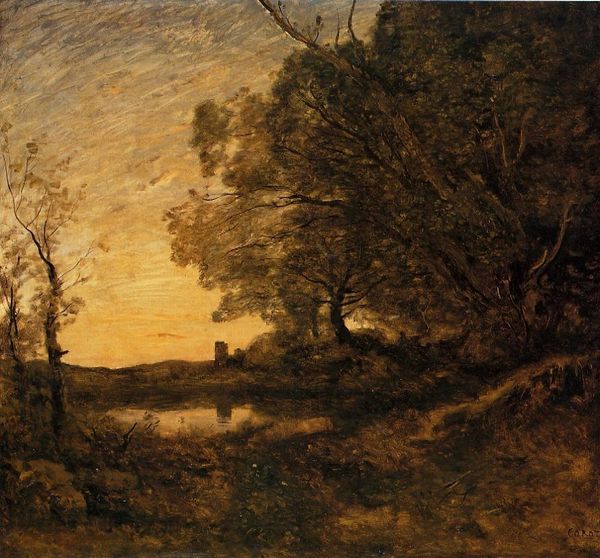
Copyright: Public domain
Editor: Here we have Camille Corot’s “Souvenir of Riva,” painted in 1870, using oil paints. It gives me this immediate feeling of peaceful contemplation, like watching the end of a quiet day. All that stillness and the single boat... What catches your eye about this piece? Curator: That stillness is it, isn't it? For me, Corot is always summoning up a world half seen, half remembered. That lake shimmers, promising a world somewhere between reality and a dream, no? I get a similar sense from the muted color palette he favored—so distinctive. Think about how revolutionary that was at a time when bright colors were all the rage. Doesn’t it make you wonder what he was trying to capture in his work? Do you feel drawn into the scene, as if you could step right into that boat? Editor: Absolutely, there's a sense of being pulled in. And the way the trees frame the scene, it feels very deliberate. Is that a classic Romantic compositional technique, this framing? Curator: You've nailed it! He is inviting us into an emotional experience using visual cues to prompt particular feelings or a mood of tranquility and reverence for the landscape, that would be very appealing for the artistic and cultural norms of that time. The small figures almost seem insignificant against nature's grandeur, but perhaps that's Corot gently nudging us to consider our place in this vast world. So, what do we make of it all? Editor: I think it's incredible how a painting of something so simple can feel so deep, like a whisper that sticks with you. It's so easy to forget now how groundbreaking paintings such as this once were. Curator: Exactly! A reminder that beauty is often found in the quiet moments, in those half-seen landscapes simmering in the edges of our minds.
Comments
No comments
Be the first to comment and join the conversation on the ultimate creative platform.
